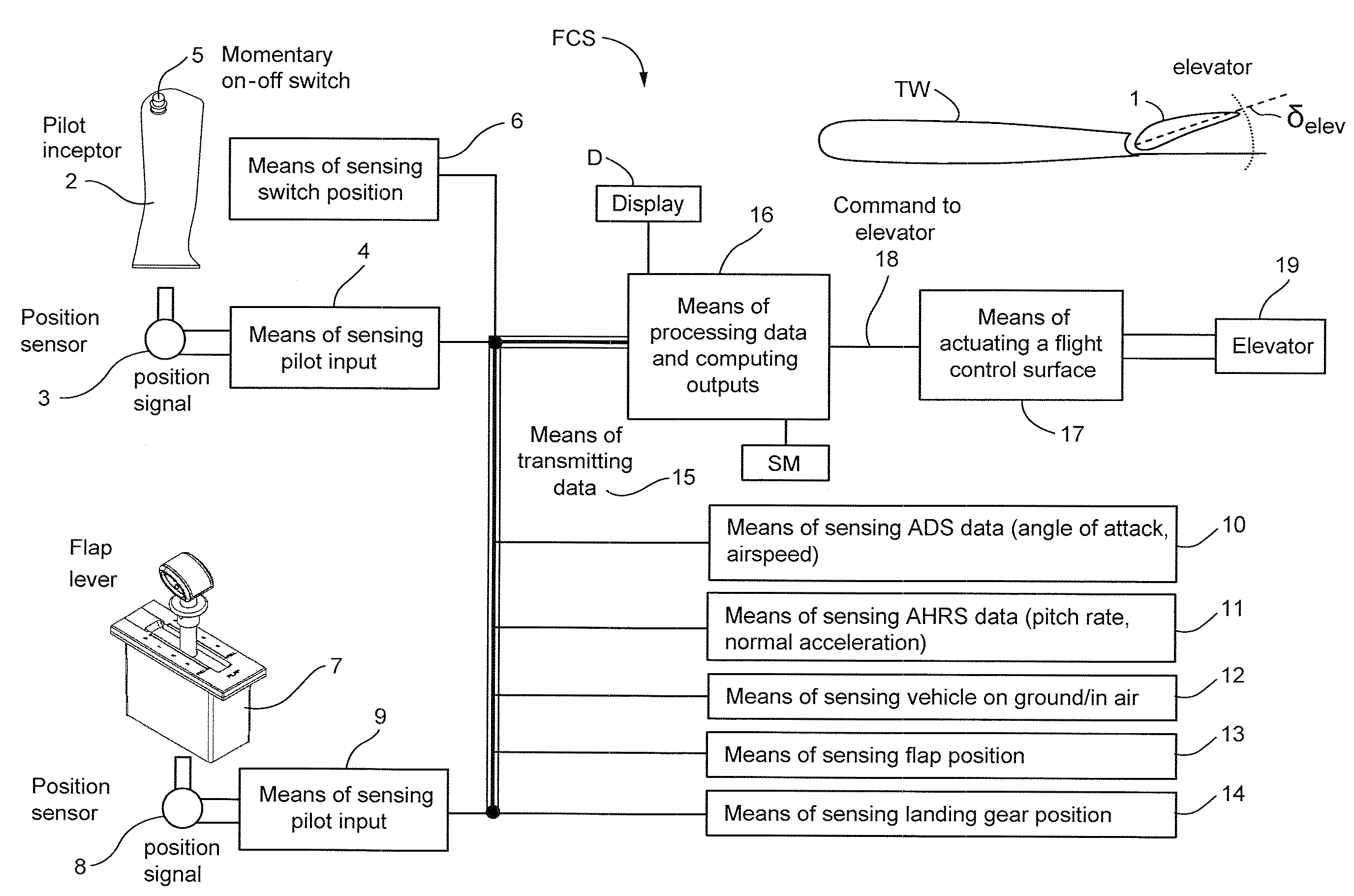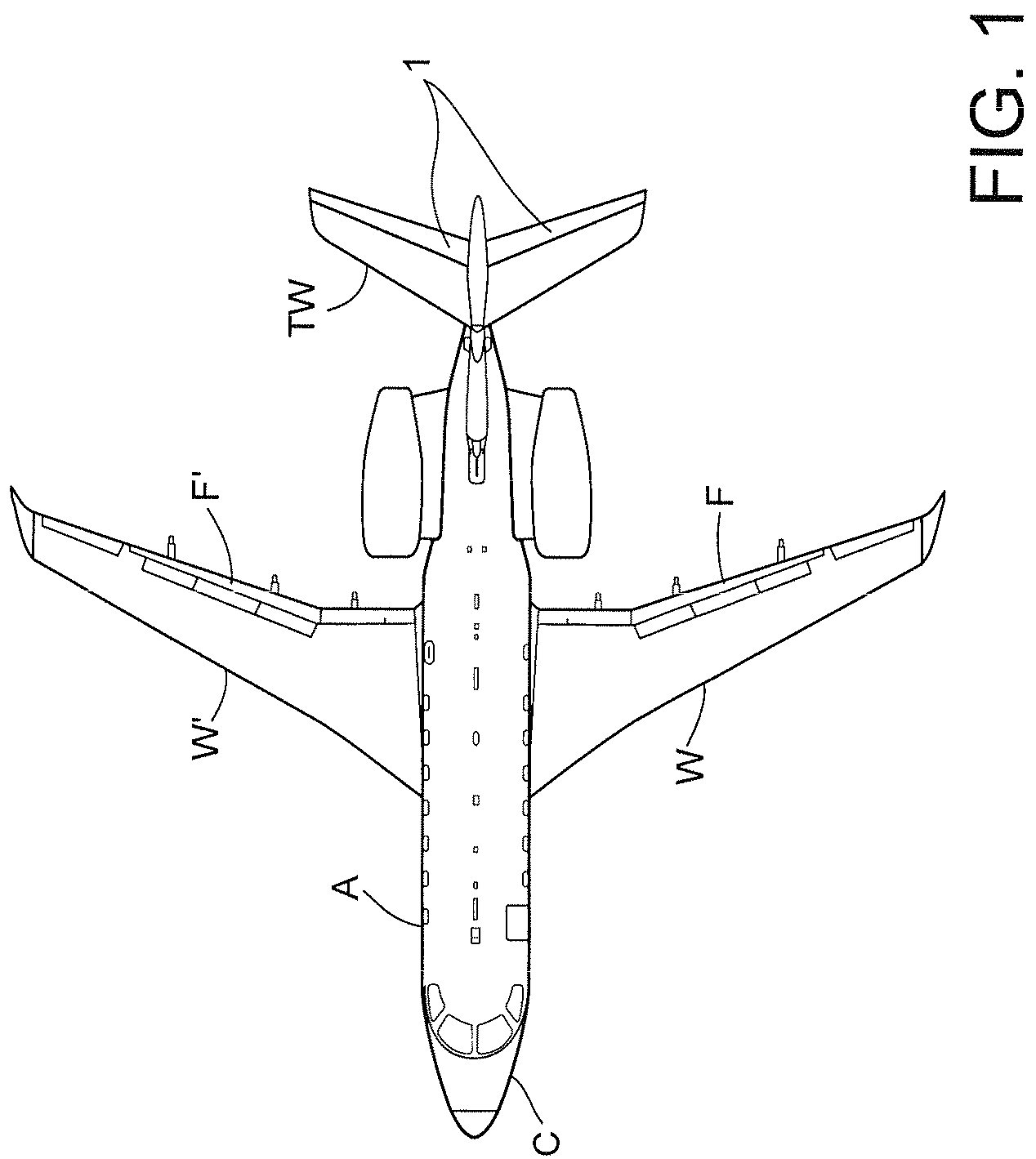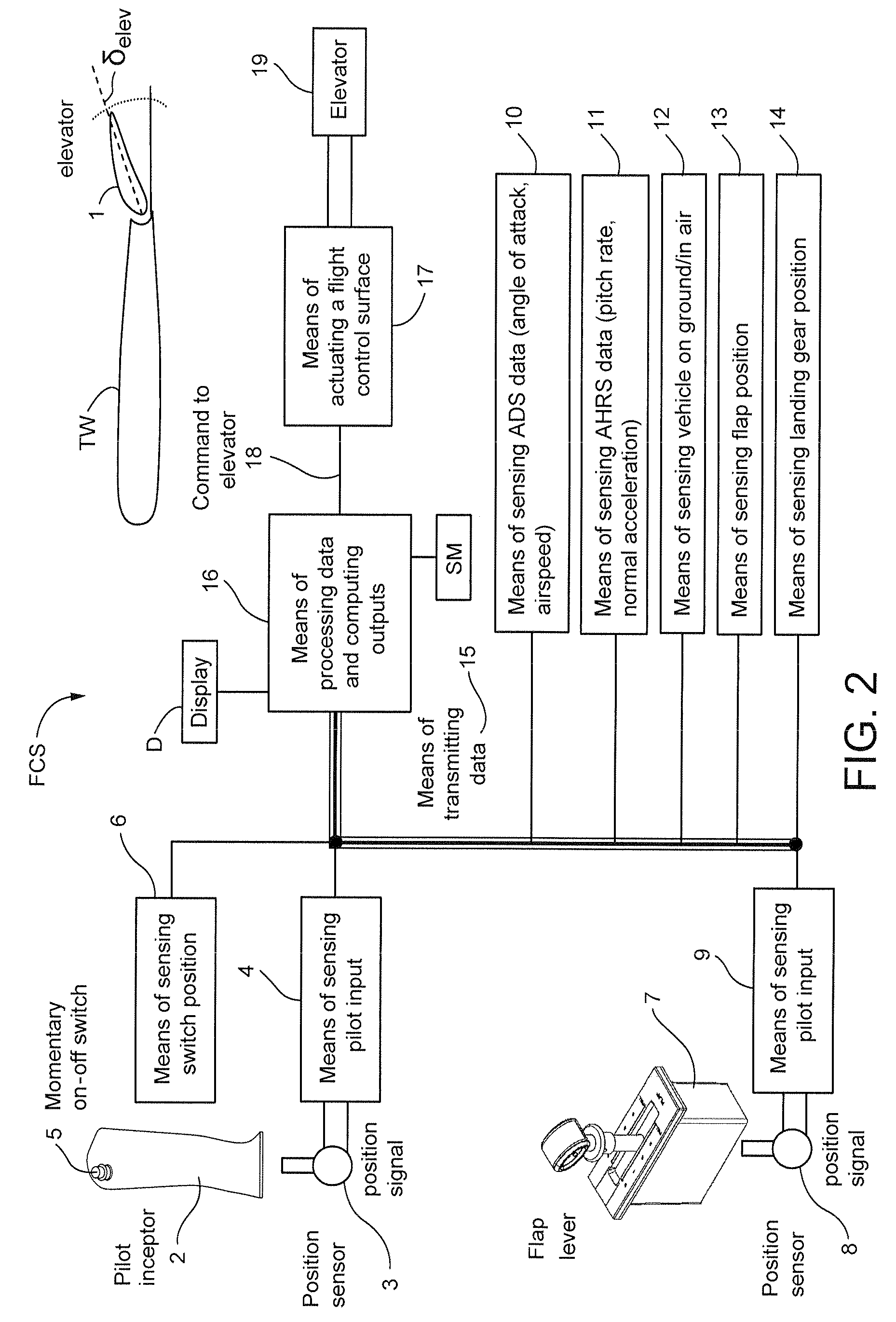Flight control system mode and method providing aircraft speed control through the usage of momentary on-off control
a control system and aircraft technology, applied in the field of human-machine aircraft control user interfaces, can solve the problems of inability to provide suitable landing flare characteristics, longitudinal control laws that require a great deal of pilot skill to operate, and the earliest control interfaces are very simple, so as to achieve safe and convenient flight, improve safety, and improve safety. the effect of flight safety and economics
- Summary
- Abstract
- Description
- Claims
- Application Information
AI Technical Summary
Benefits of technology
Problems solved by technology
Method used
Image
Examples
Embodiment Construction
[0032]FIG. 1 shows an example: a twin turbo-fan engines civilian transporter aircraft A. Two elevators (1) are installed in the horizontal tail wing TW for pitch control, and two flaps F are installed in the main wings W for controlling lift and to slow the aircraft during landing. The tail elevators 1 control the pitch of the aircraft A during takeoff, flight and landing. The pilot in the cockpit C interacts with the aircraft A to control the control surfaces including flaps F and elevators 1. A fly-by-wire electronic flight control system accepts pilot input (e.g., through manual manipulation of a flap lever 7 and a pilot interceptor 2, see FIG. 2), and uses automatic control laws typically implemented by a digital (computer) processing system to control actuators that in turn control the positions of flaps F and elevators 1. When landing, landing gear (not shown) on the aircraft A's underside descends from a compartment in the belly of the aircraft to provide wheels that contact ...
PUM
 Login to View More
Login to View More Abstract
Description
Claims
Application Information
 Login to View More
Login to View More - R&D
- Intellectual Property
- Life Sciences
- Materials
- Tech Scout
- Unparalleled Data Quality
- Higher Quality Content
- 60% Fewer Hallucinations
Browse by: Latest US Patents, China's latest patents, Technical Efficacy Thesaurus, Application Domain, Technology Topic, Popular Technical Reports.
© 2025 PatSnap. All rights reserved.Legal|Privacy policy|Modern Slavery Act Transparency Statement|Sitemap|About US| Contact US: help@patsnap.com



